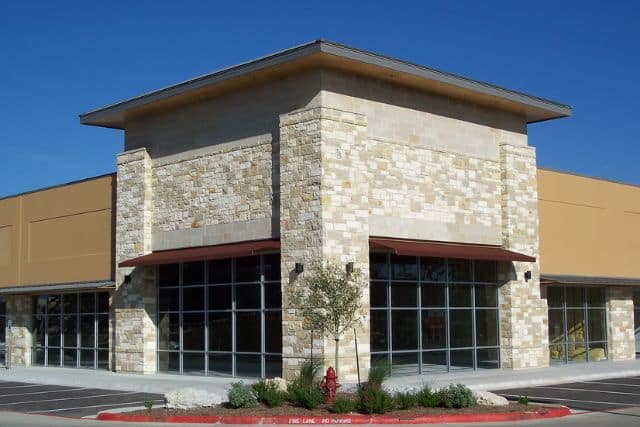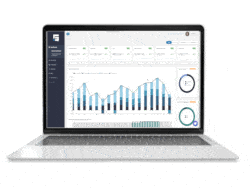Sally was the key player as her family’s office transitioned from one generation to the next. The commercial portfolio had five properties. These commercial properties included 80 tenants and commercial leases across an industrial park, a retail building, and a single-tenant property.
As she tried to get her arms around these assets, she realized that the financial reports were not up to date. Even worse, neither were the tax returns. Tax returns had not been filed in three to four years. This created a huge challenge because they had to refinance one of the properties. The banks refused to refinance without copies of the current tax returns going back three years.
Her job was to prepare financials for the tax preparer. She investigated the revenue and expenses of this family office project. Through this process, she realized that many of the leases in place were one-page renewals of existing commercial leases that had been in place for 10, 15, or even 20 years. Updating the commercial leases was first up on Sally’s list of things to do.
The Challenges of Inheriting a Family Office Portfolio
The commercial leases she was updating were mostly gross leases instead of net or triple net leases. Therefore, a lot of money was not being collected from tenants, which should have been. The lease structures were old and rickety and not in sync with the current standards. When reviewing these commercial leases to update them, she met with a real estate attorney to review the lease forms. He shook his head in disbelief. The commercial leases lacked the clarity and completeness necessary for long-term management.
She remembered her father being so proud of these leases and the money he had saved. He took a little bit from this lease and a little bit from that lease. Thus, he cobbled together his own lease without seeking the help of an attorney, and it was reflected in the formats that were in place.
Even more challenging is that some tenants were refusing to pay rent. These old leases didn’t have late payment or other default clauses. Such clauses would have made it easier to update commercial lease agreements to enforce rent payments or get them to move out.
Sally was fortunate because she had been a property manager for 10 years for a commercial real estate company. She had gained experience and knowledge in the industry. However, she had never questioned her Dad about the structures of the leases that were in place for the family office.
She was familiar with leases from the local Commercial Brokers Association, the Building Owners and Managers Association (BOMA), and the California AIRCRE. She had read many of them and had a good sense of what the state-of-the-art should be for commercial leases. Knowing this, she knew the necessity to update commercial agreements regularly to maintain their effectiveness.
Outdated Financials and the Risks of Non-Compliance
As she was doing some additional research, she found out that some states had updated legislation that affected commercial tenants. In fact, effective 1 Jan 2025, California changed its laws regarding commercial tenancies. This change focused on protecting small tenants who may not speak English. These new clauses look like they have been influenced by residential tenant clauses because they are very tenant-friendly.
The new clauses, which are four key provisions of SB 1103 look like this:
- The first clause imposes new notice requirements on owners seeking to raise rent for month-to-month tenancies. For rent increases of 10% or less, the owners must provide tenants at least 30 days’ notice. For increases of more than 10%, owners must provide at least 90 days’ notice in advance.
- Month-to-month tenancies will automatically renew, potentially for longer than a month. Renewal occurs unless the owner provides notice of termination at least 60 days prior to the proposed termination. This applies where a month-to-month tenant has occupied the property for at least a year. If the tenant has a shorter tenancy term than a year, then a 30-day notice will suffice.
- Lease agreements with smaller tenants who speak primarily Spanish, Chinese, Tagalog, Vietnamese, or Korean must be translated into such language. The translation must be delivered to the tenant.
- Owners may collect building operating costs from tenants only if they allocate such fees proportionately to each tenant. They must provide detailed and itemized supporting documentation there-of. Additionally, if an owner brings a claim against one of these small tenants for failure to pay such a fee, the tenant may assert an affirmative defense for the owner’s violation of the provision.
Why Lease Reviews Are Essential for Family Offices
As usual, commercial landlords are facing new changes in commercial leasing. Therefore, it is critical to review leases regularly, update commercial lease formats, and ensure compliance. Family offices need to stay up to date and coordinate with their attorneys and brokers. This coordination ensures maximum returns on their real estate investments. At a minimum, family office managers should review the structure of their leases every five years.
If these lease changes are not considered, they can affect generational transfers from one generation to the next. Sally understood this but had been delinquent in reviewing the information before her father gave her responsibility for updating their commercial lease arrangements. Candidly, her parents could have involved her much sooner, but chose not to.
Update Commercial Lease with STRATAFOLIO
With our powerful automation tools, STRATAFOLIO makes it easy to update and manage your commercial leases. If you’re searching for a comprehensive solution that integrates seamlessly with QuickBooks and simplifies the management of your family office real estate portfolio, schedule a demo today to see how STRATAFOLIO can work for you.






